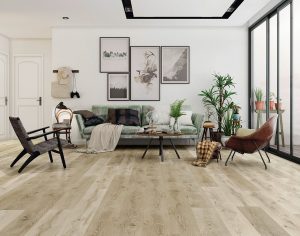Wood floors add a classic touch to any home. They are versatile and can complement a variety of design styles. Hardwood is a natural, renewable product that is durable and resilient. It is easy to clean and maintain and offers a lasting beauty. However, installing hardwood flooring can be a complicated process. For the best results, it’s important to learn how to install it properly.
Most solid hardwood floors are sanded onsite, but you can also have them stained to match your existing flooring. You can choose from different wood species and colors to suit your style and budget. Many prefinished options come with a warranty of up to 50 years.
Some popular species include maple, red oak, hickory, and pine. These species have varying levels of durability and odor. If you’re unsure whether a specific species is right for your home, you should consult with a professional flooring expert.
The grain patterns of each species can help you identify the wood. Maple has a close, curly grain. Cherry has a smooth, grain pattern that is often preferred for its rich, warm color. Birch has less pronounced grains and is more open to scratches and dents.
A lot of homeowners believe that installing hardwood makes their space look bigger. There’s no doubt that these hard surfaces can give your home a stylish look, but they require regular cleaning. Be sure to keep your floors free of dirt, oil and standing water to avoid damaging them. Also, you should regularly sweep and mop them to keep them looking their best.
When installing new hardwood, it’s important to fill any gaps in the subfloor and use a vacuum set to hardwood. A broom or dust mop is also recommended. This can prevent dirt and debris from grinding into the finish and causing scratches.
Another common problem is moisture damage. Moisture causes the wood to swell and cup. To avoid this, your floor should not be installed in rooms with high humidity or standing water. Also, you should install doormats and runners to protect the wood’s finish.
If you’re installing a wood floor that isn’t sanded on site, it’s a good idea to have a sanding tool on hand. This can help you sand away any excess glue or tile mastic that may be in the floor.
You can also install rugs and doormats to protect your wood from the weather. However, you should still be careful when walking around on the floor. Wear shoes or a sock to avoid scratching the surface.
One of the biggest issues with hardwood flooring is water. Water is not good for the floors, and they are bound to get scratches and gouges over time. Fortunately, it’s easy to repair these scratches.
Whether you decide to install solid hardwood or engineered wood, you can trust your floor to stand the test of time. In addition, you can choose a wide range of colors and wood types to create the perfect atmosphere.

Finding the Perfect Hardwood Flooring for Your Home: A Guide to Selecting The Right Style For You
